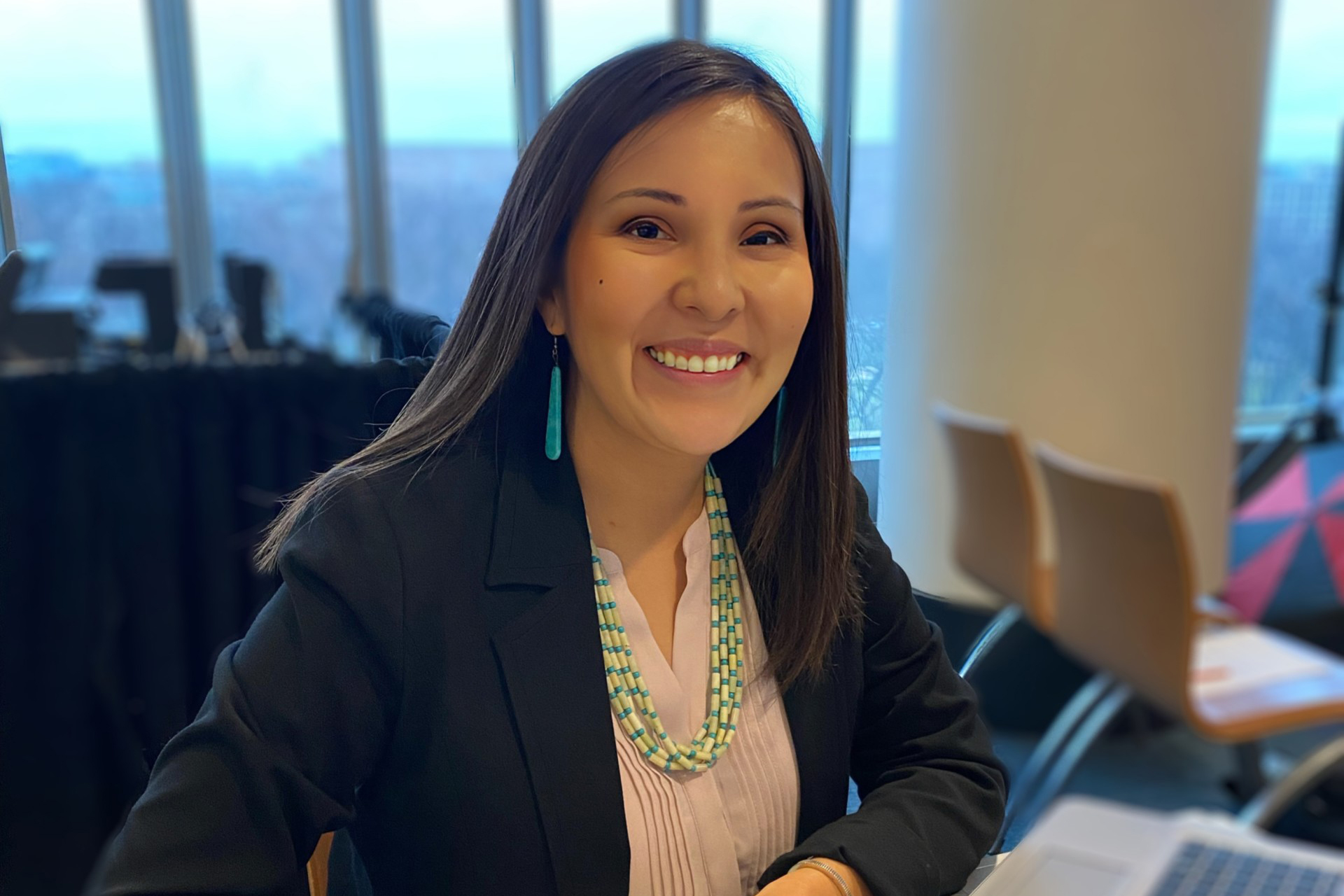
Patrese Atine is joining CSU in March as the first Assistant Vice President for Indigenous and Native American Affairs.
Colorado State University will strengthen its relationships with Tribal communities and Indigenous and Native Peoples through its first administrator dedicated to advancing university initiatives and programs that are responsive to the needs of Tribal and Indigenous communities.
Patrese Atine will join CSU on March 1 as its first Assistant Vice President for Indigenous and Native American Affairs. Atine most recently worked as director of congressional and federal relations at the American Indian Higher Education Consortium, focusing on maintaining partnerships with federal agencies to meet the unique needs of Tribal Colleges and Universities (TCUs), students and Tribal Nations. Atine is an enrolled member of the Navajo Nation and earned a master’s in Education, Policy, Planning and Administration from Boston University.
At CSU, Atine will report directly to the university president. As AVP, Atine will lead CSU’s outreach to Tribal communities and create partnerships, work with the CSU community on Native and Indigenous issues on campus, and partner with Tribal leadership to increase student recruitment and retention.
“This is a significant and powerful step forward for CSU in its commitment to Indigenous and Native American people and communities,” Interim President Rick Miranda said. “I particularly want to recognize the leadership of our campus Native American Advisory Council, which not only envisioned and advocated for the position but helped lead the search to its successful conclusion. We are delighted to announce that Patrese Atine will join us at CSU this spring.”
Focused leadership
The position was created after a recommendation from CSU’s Native American Advisory Council in 2021. The council began studying what a leadership position focused on Native American and Indigenous Peoples at CSU could look like and how it could benefit the university community. After the University adopted a land acknowledgment statement, the council sought more concrete steps CSU could take to meet the needs of Native American students and build and maintain better relationships with Tribal nations.
“The hiring of an Assistant Vice President for Native American and Indigenous Affairs represents an important moment in CSU history.”
— Roe Bubar, professor in the Department of Ethnic Studies and member of NAAC
“The hiring of an Assistant Vice President for Native American and Indigenous Affairs represents an important moment in CSU history,” said Roe Bubar, a professor in the Department of Ethnic Studies and member of NAAC. “Moving beyond a land acknowledgement is critical in accepting responsibility for the land this university resides upon. We look forward to the future efforts of Patrese Atine in increasing our recruitment and retention of Native students, staff and faculty, representing the interests of Native nations, and supporting CSU’s Native American Cultural Center in the years ahead.”
Native lands and the Morrill Act
During their research, NAAC members were able to identify the original lands used in the creation of Colorado’s land-grant institution. Under the Morrill Act of 1863, states or territories could set aside federal lands to create colleges that benefited agricultural and mechanical arts. Quite often, as in Colorado, these lands were Native lands. Often, states sold these lands. But Colorado still owns a portion of them and receives revenue generated from mineral and grazing leases.
These funds come to CSU from the State Land Board and are overseen by the Board of Governors of the Colorado State University System. NAAC suggested these funds be used to support the AVP and efforts to address Native American and Indigenous issues, including student recruitment and retention. In October, at the recommendation of NAAC and with the support of Interim President Miranda and CSU System Chancellor Tony Frank, the Board of Governors of the CSU System voted to move stewardship of the land-grant fund revenues to the University president and the new AVP. $500,000 will be allocated annually to support these efforts.
“The other big piece of it is about what this means for CSU’s relationships with Tribal nations and Indigenous communities,” said Lindsey Schneider, assistant professor in the Department of Ethnic Studies and co-chair of NAAC. “As I think we heard from the candidates in the search, education was one of the key promises made by the US government in most treaties with Tribal nations, and many Tribal leaders see it as a promise that has largely gone unfulfilled.”
Three critical themes
In developing the position, three members of NAAC — Schneider; Ricki Ginsberg, associate professor of English education and NAAC co-chair; and Susan Faircloth, director of the School of Education and member of NAAC — contacted other land-grant universities about their infrastructure and support of Native American students, communities, and Tribal nations. Three themes emerged, according to the report:
- The ways in which these universities were committed to the land and understood the cultural context.
- The importance of a high-level position that reports to the president and is valued in the infrastructure of the institution.
- The support for students, faculty and staff at the institution.
NAAC’s recommendation was to add executive-level leadership to lead CSU’s commitment to addressing Native issues, engage with Tribes, provide cultural context and represent CSU in community engagement.
“Higher ed has been far too inaccessible for Native people, and the education system as a whole has often been downright detrimental,” Schneider said. “As a land-grant institution, CSU shares some of the responsibility for that unfulfilled promise. Creating the AVP position is part of that, and it’s exciting to see the recognition that Native people are not just an underserved/marginalized population, we’re also members of sovereign nations who have a unique relationship with the government as a result.”